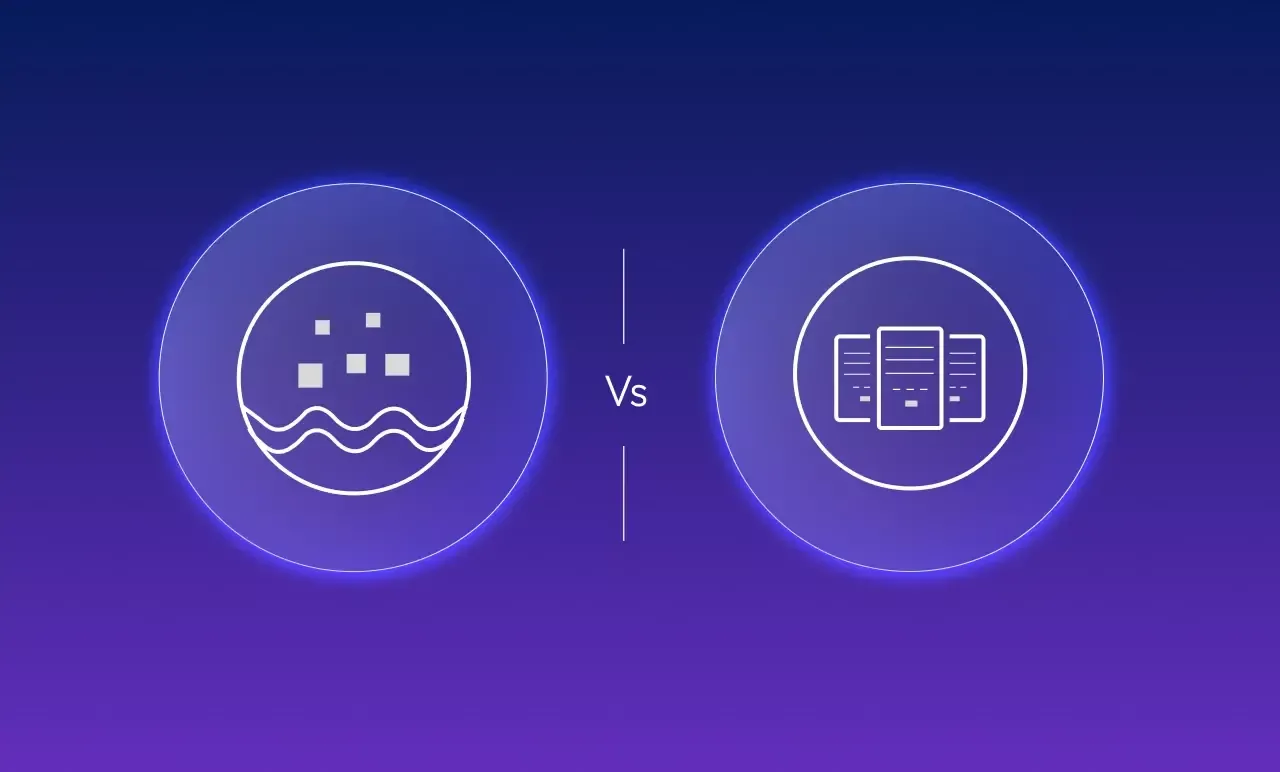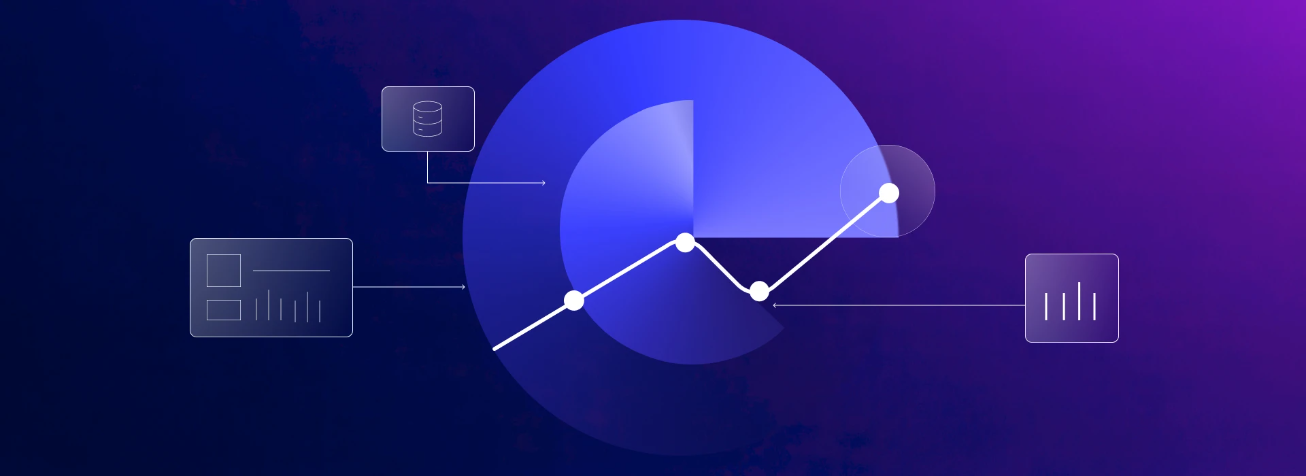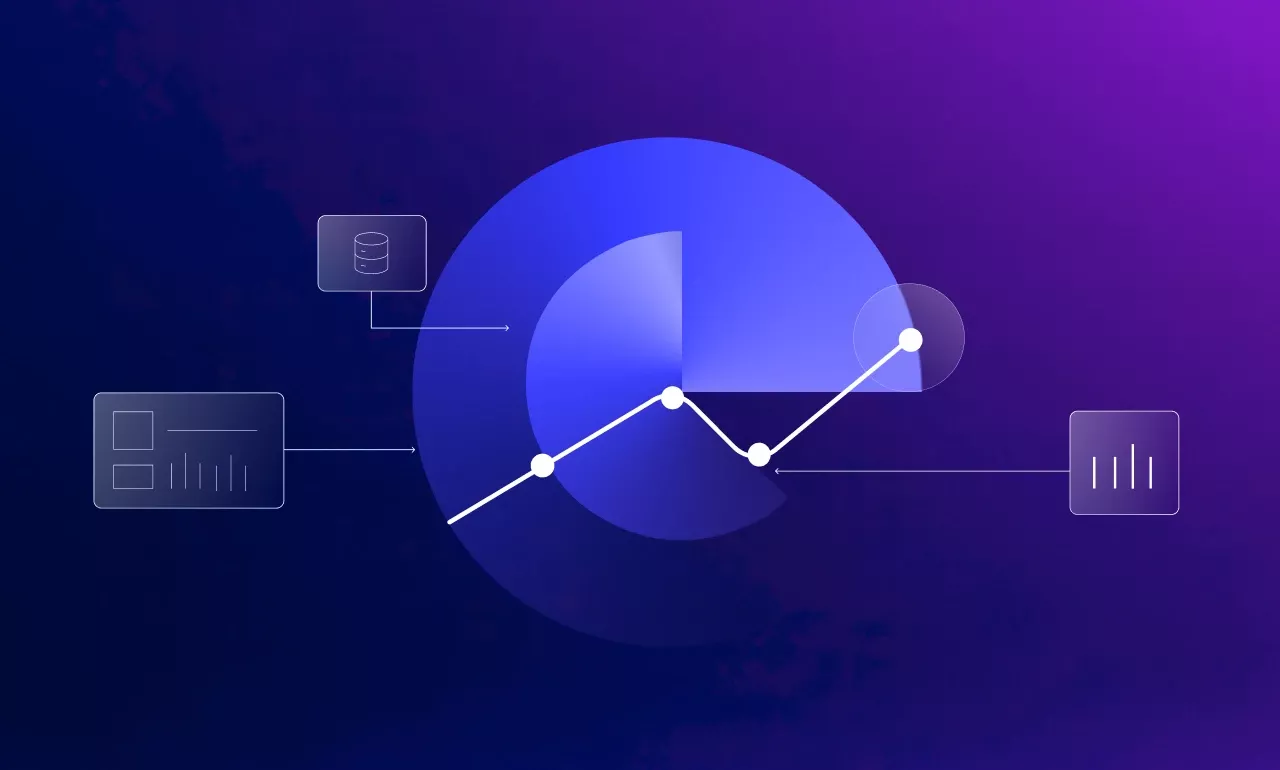Data Storage Decoded: Data Warehouse vs Data Lake Explained
Automation in Data Analytics: Technologies, Stages and Benefits
Online forums are filled with scared professionals asking if automation in data analytics is going to replace their expertise.
The simple answer is no!
Automation is all about amplifying human talent and taking it to unprecedented heights.
Instead of drowning in spreadsheets, data professionals can use automation to reclaim hours lost to tedious data wrangling, cleaning, and reporting. This reclaimed time can then be devoted to making strategic decisions.
By leveraging smart workflows, data analytics automation streamlines the entire process, from collecting and preparing data to analyzing trends and delivering real-time reports.
Still confused about how this evolving technology can help your business move faster and smarter?
Explore how automation is making data analytics more accessible, efficient, and insightful for decision-makers like you.
Technologies Driving Data Analytics Automation
The importance of automation in data analytics lies in its ability to reduce reliance on manual data entry and error-prone spreadsheets. This allows organizations to analyze multiple metrics simultaneously.
Investing in the latest automation technologies empowers businesses to stay agile and maintain a competitive edge in an increasingly fast-paced market.
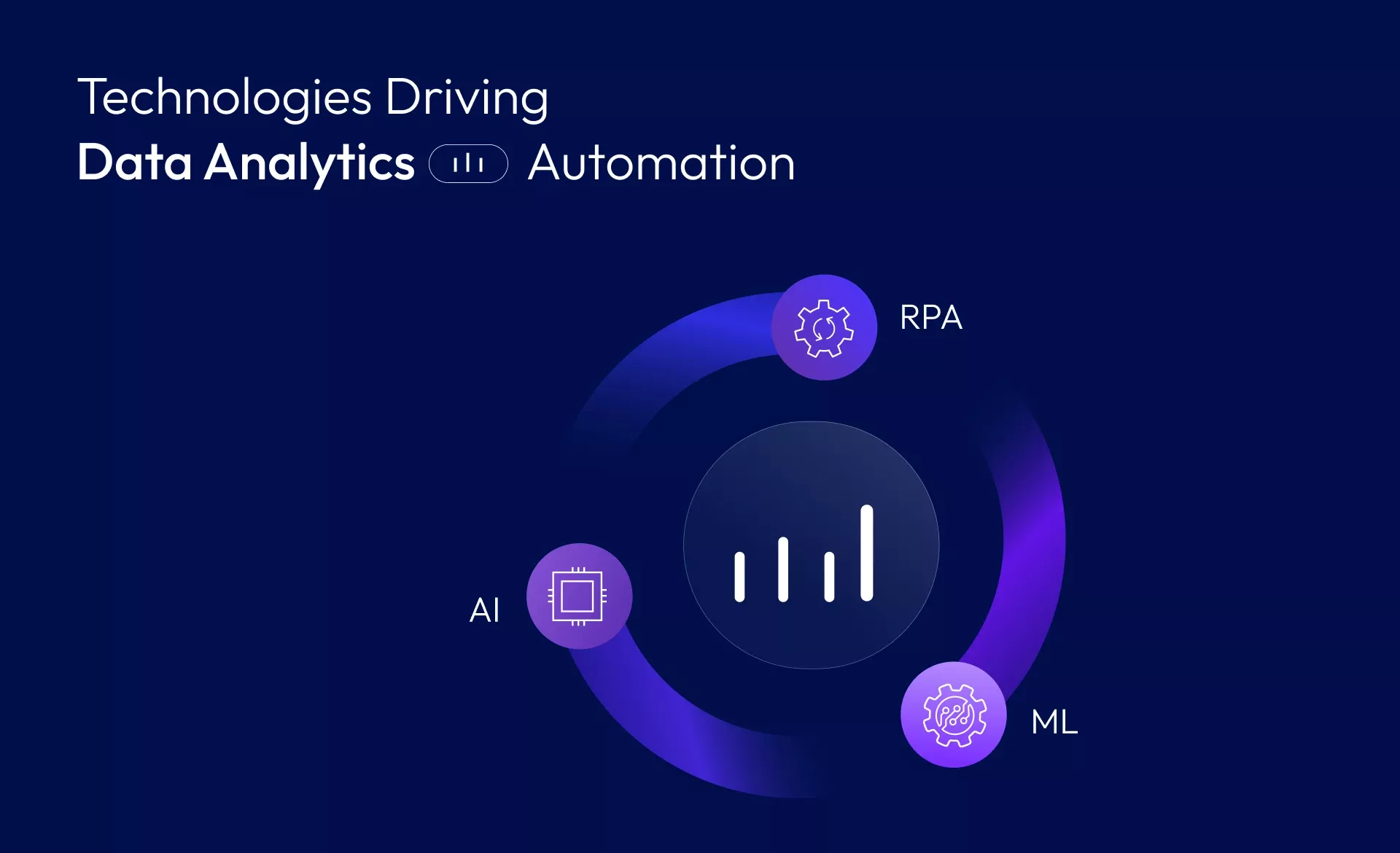
The Role of AI and Machine Learning in Automation
AI and ML form the backbone of automated data analytics, transforming routine tasks into streamlined, intelligent workflows. Today’s advanced platforms integrate generative AI to automate documentation, summarizing workflows by capturing key inputs, outputs, and logic steps.
Machine learning further adds to these capabilities to deliver:
- Automated Documentation: Generative AI enhances governance by automatically documenting workflows by summarizing their purpose, inputs, outputs, and key logic.
- Seamless Model Deployment: AutoML platforms use low-code/no-code solutions to define business problems, select features, generate code, and optimize models.
- Intelligent Data Processing: ML models autonomously detect and correct anomalies, such as missing values or outliers, ensuring cleaner, more reliable datasets. They also excel at sifting through massive datasets to uncover trends, correlations, and insights that might otherwise go unnoticed.
How Does RPA Integrate with Analytics Workflows?
By eliminating manual intervention in data handling, RPA ensures well-structured datasets that support advanced analytics and machine learning applications with:
- Automated Data Entry & Migration: Ensures seamless data input and transfer across enterprise systems, reducing errors and enhancing consistency, particularly during system upgrades or mergers.
- Real-Time Data Validation & Monitoring: Continuously detects and corrects anomalies, improving data integrity for more reliable analytical outcomes.
- Efficient Data Aggregation & Replication: Automates the retrieval and consolidation of diverse data sources, including IoT logs and system-generated records, to enrich analytics.
- Enhanced Data Structuring for AI & ML: Provides well-organized datasets that enable more effective machine learning model training and predictive analytics.
What Are the Best Automation Tools for Data Analysis?
As organizations continue to rely on data for strategic decision-making, various tools and services enhance efficiency and accuracy across different stages of data processing. Some of the most widely used platforms for automation in data analytics are:
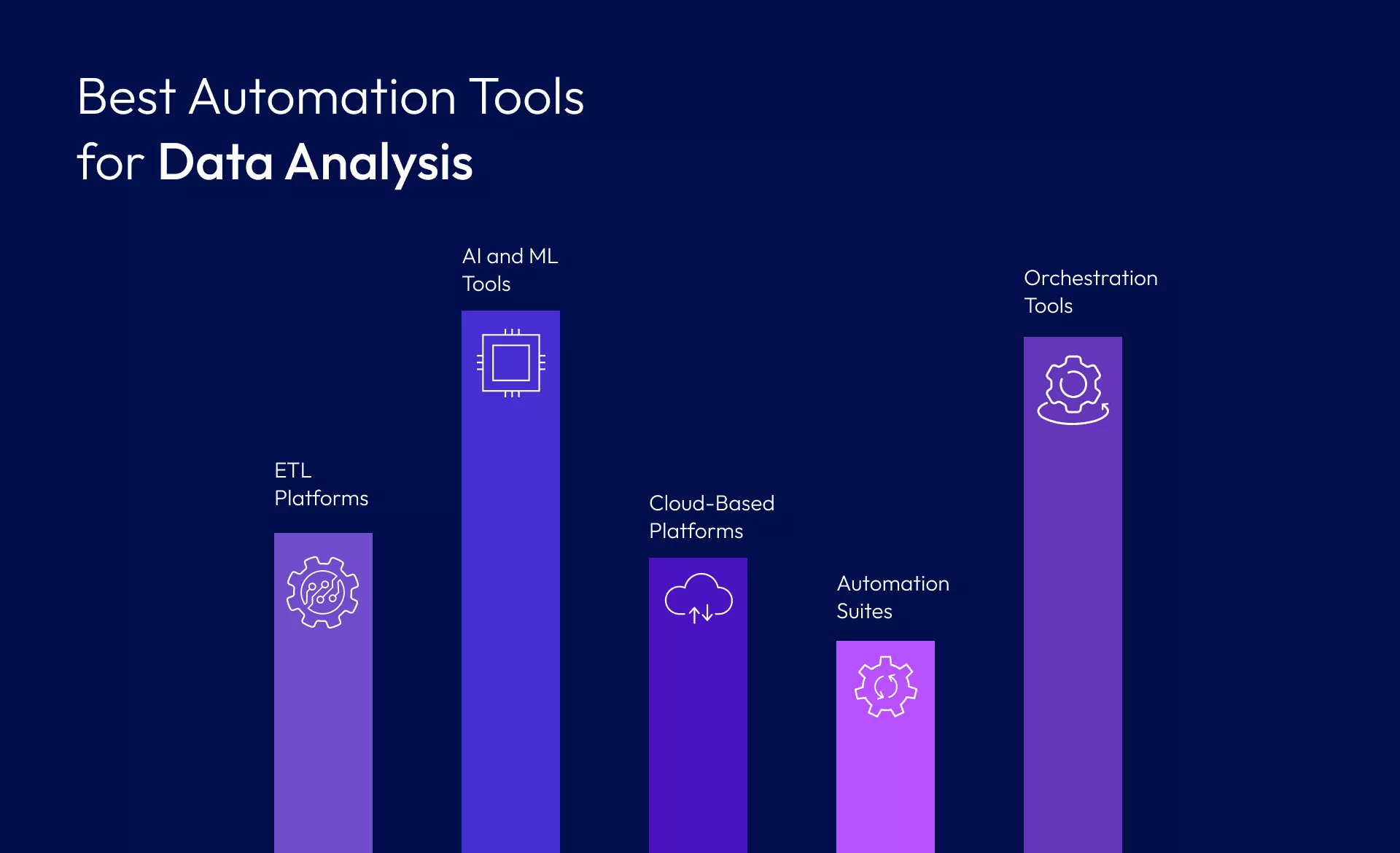
ETL Platforms
ETL (Extract, Transform, Load) platforms automate data integration by extracting data from multiple sources, transforming it into a structured format, and loading it into target systems. These data analytics automation tools minimize manual intervention and enhance data consistency.
- Talend automates data extraction, transformation, and loading processes across multiple sources while maintaining high data integrity.
- Informatica provides advanced ETL capabilities, metadata management, and data quality assurance to support complex enterprise environments.
- AWS Glue offers a fully managed, serverless ETL service that automates data discovery, transformation, and cataloging to facilitate analytics readiness.
- Azure Data Factory enables seamless data migration, transformation, and orchestration across diverse data ecosystems through cloud-based ETL processes.
AI and ML Tools
Artificial Intelligence (AI) and Machine Learning (ML) platforms empower businesses to automate complex analytical processes, enabling predictive insights and data-driven decision-making.
- TensorFlow serves as an open-source ML framework that enables users to build and deploy deep learning models across multiple platforms.
- PyTorch is a flexible ML library developed by Facebook, which researchers and developers use for AI applications in both research and production environments.
- GPT (Generative Pre-trained Transformer) is a sophisticated natural language processing model that facilitates text generation, summarization, and AI-driven analytics.
- H2O.ai provides an open-source ML platform with automated model-building and deployment capabilities to enhance AI-driven analytics.
Cloud-Based Platforms
Cloud-based platforms provide infrastructure and computing power to support large-scale data processing, storage, and analytics.
- Amazon Web Services (AWS) delivers a comprehensive cloud computing platform that includes services for data warehousing, AI processing, and real-time analytics.
- Microsoft Azure provides cloud solutions that help businesses deploy AI models, manage big data workloads, and build enterprise-scale analytics solutions.
- Google Cloud Platform (GCP) offers a suite of cloud services that support scalable computing, storage, and data analytics solutions for enterprises.
Automation Suites
Automation suites improve efficiency by automating repetitive tasks, optimizing workflow processes, and reducing manual intervention.
- UiPath provides a powerful Robotic Process Automation (RPA) platform that automates business workflows to minimize manual errors and improve operational efficiency.
- Power Automate from Microsoft connects applications and automates workflow processes across various business functions, streamlining tasks efficiently.
- Automation 360 by Automation Anywhere is a cloud-native RPA platform that integrates AI and ML capabilities into business process automation to drive intelligent automation.
- Selenium is an open-source framework used to automate web application testing and ensure seamless cross-browser compatibility.
Orchestration Tools
Workflow orchestration is essential for managing interdependent data analytics processes. Orchestration tools ensure that complex workflows are executed efficiently and in the correct sequence.
- Apache Airflow is an open-source platform that allows users to programmatically author, schedule, and monitor data workflows, ensuring seamless orchestration of data pipelines.
Leveraging these automation solutions can help businesses accelerate their data-driven initiatives, improve decision-making accuracy, and drive operational excellence.
Automation in Different Stages of Data Analytics
As businesses collect a vast array of data from diverse sources, they have access to a range of automated data analytics systems. If you're uncertain which solution might best suit your projects, exploring common automation in data analytics examples can provide valuable insights into how automation transforms data workflows.
Below is an overview of how automation enhances each stage of the analytics lifecycle.
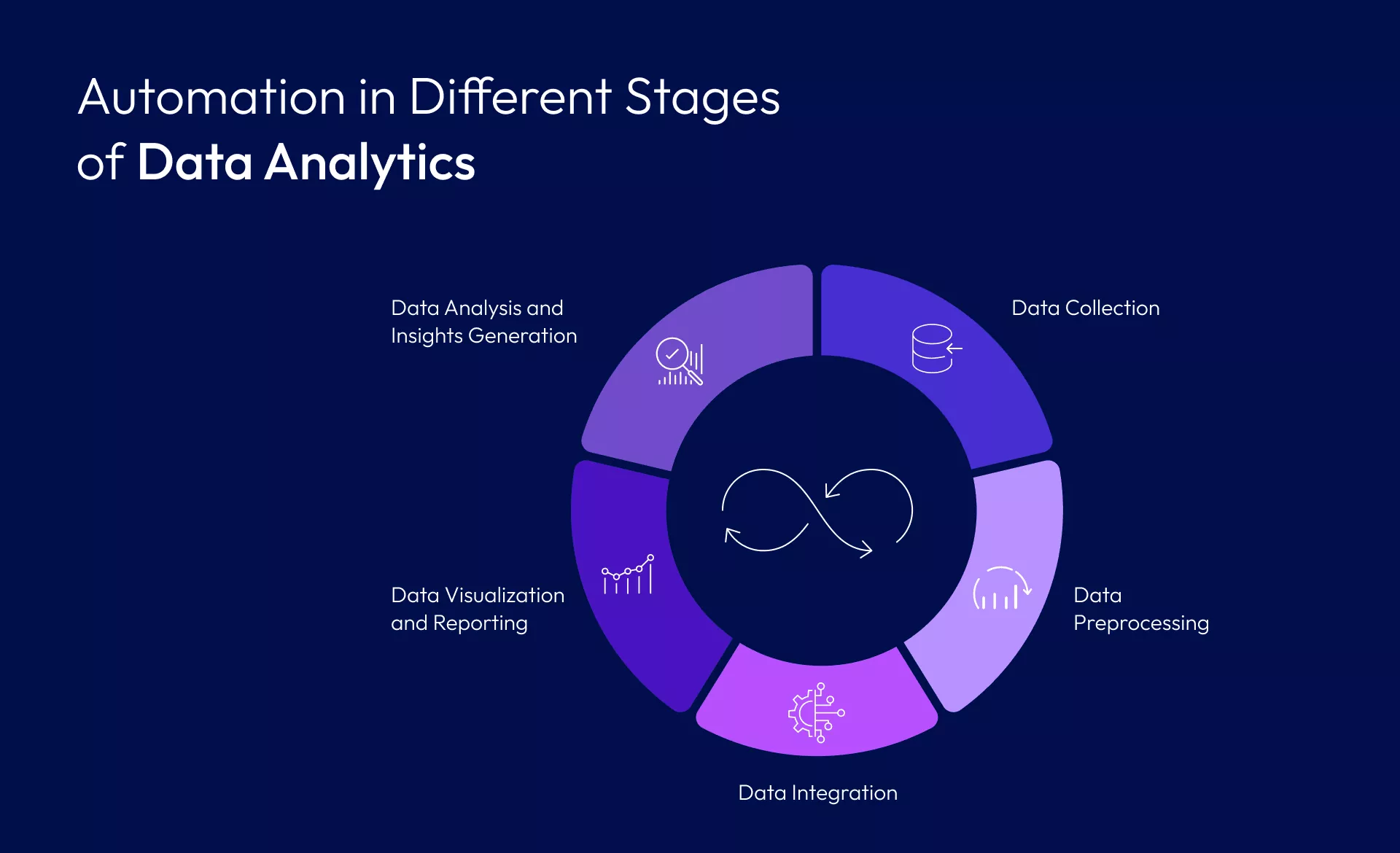
- Data Collection: Automated data collection leverages APIs, web scraping, sensors, IoT devices, and cloud applications to gather data continuously. APIs offer structured access to data from platforms like Twitter and Google, while web scraping tools systematically extract website content.
- Data Preprocessing: Platforms like Alteryx streamline these ETL processes by validating and standardizing datasets quickly for deeper analysis.
- Data Integration: Automated ETL pipelines and real-time synchronization tools, such as Talend and Airbyte, merge data from diverse sources into a unified repository, maintaining an up-to-date and reliable foundation for analytics.
- Data Visualization and Reporting: Automated dashboards convert processed data into actionable insights. Tools like Power BI generate interactive, self-updating visualizations that highlight trends and key metrics, facilitating dynamic, data-driven decisions.
- Data Analysis and Insights Generation: Advanced analytics leverage Artificial Intelligence (AI) and Machine Learning (ML) to detect patterns, forecast trends, and uncover anomalies within large datasets. Platforms using specialized models automate complex statistical modeling and predictive analytics to generate detailed business intelligence.
When choosing an online data analyzer tool, prioritize an intuitive interface, flexible customization, scalability, robust security, and cost-effectiveness. This balanced approach ensures an efficient, automated, and secure data analysis process that adapts to your business needs.
What Are the Benefits of Data Analytics Automation for Businesses?
Reduced Manual Work and Time Savings
Automation in data analytics minimizes tedious manual tasks by streamlining data collection, cleaning, and preparation. This rapid processing eliminates hours of repetitive work, significantly reducing processing time, often by up to 80%, and ensuring consistent, reliable results.
Accelerated Insights and More Frequent Reporting
By rapidly processing large datasets, automation delivers near-real-time insights that enable continuous dashboard updates. This frequent reporting allows businesses to identify trends and respond agilely to market changes quickly.
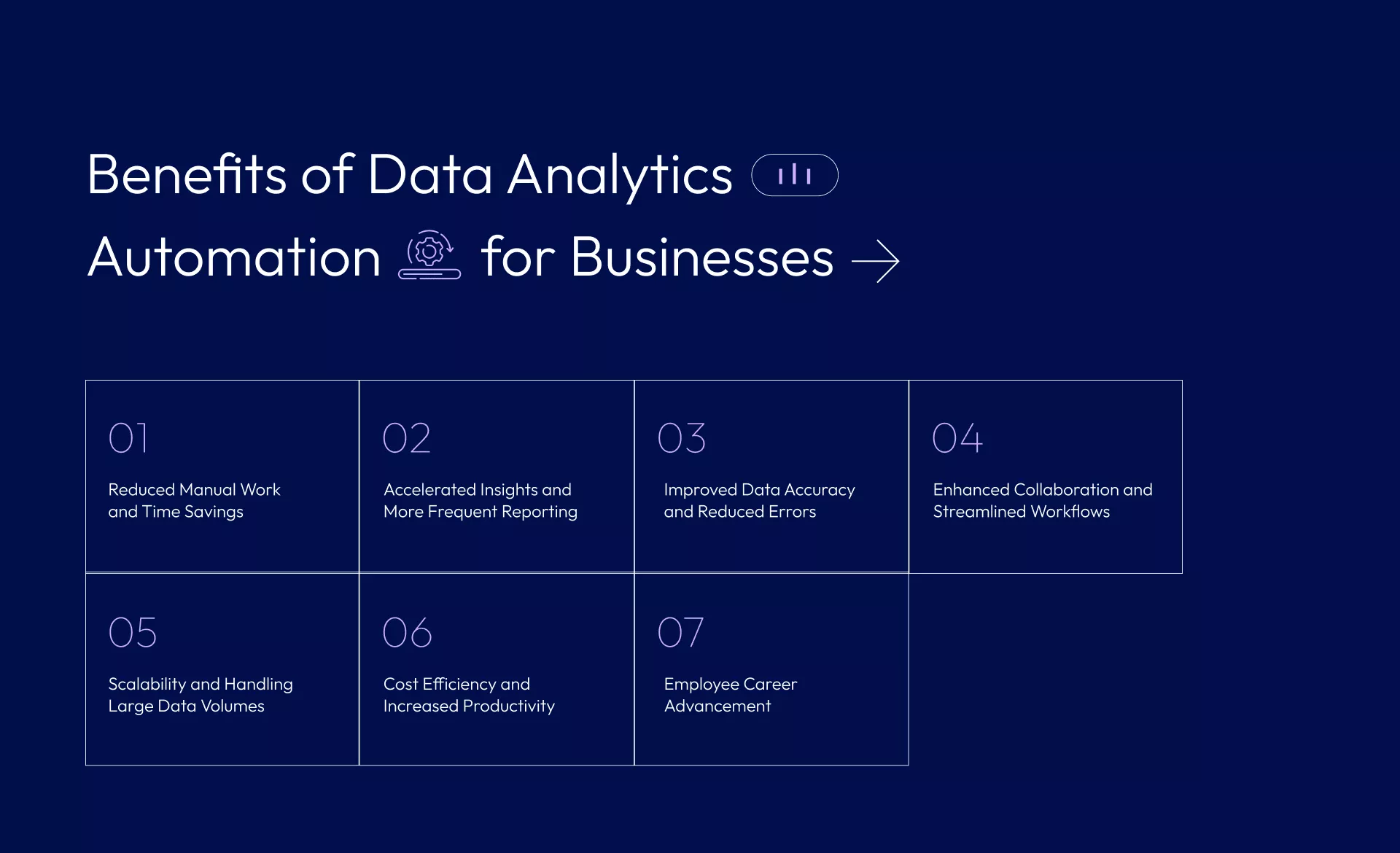
Improved Data Accuracy and Reduced Errors
Automation enforces consistent logic throughout the data pipeline, drastically reducing errors common in manual handling. Visual interfaces and standardized routines enhance data accuracy and reliability, mitigating the risk of costly mistakes.
Enhanced Collaboration and Streamlined Workflows
Cloud-based automated analytics platforms centralize data models and dashboards, facilitating seamless collaboration among teams. This integrated environment encourages cross-departmental cooperation and speeds up decision-making.
Scalability and Handling Large Data Volumes
Designed to scale effortlessly, automated systems manage increasing data volumes and simultaneous queries without additional resource strain.
Cost Efficiency and Increased Productivity
Although some solutions involve licensing fees, automation reduces labor costs by cutting down on manual work and boosting overall productivity.
Employee Career Advancement
For professionals, leveraging automated analytics shifts the focus from routine tasks to strategic analysis, fostering skill development and enabling greater contributions to data-driven initiatives. This enhanced role can accelerate career growth and innovation within the organization.
The Future of Data Analytics Automation
Automation in data analytics is currently still evolving at its stages of development but is already playing an integral role in the speed and efficiency with which businesses can gain insights from data. Statista reports that the artificial Intelligence market is projected to grow at a CAGR of 27.67% over the next five years, reaching a volume of USD 826.70 billion by 2030.
This number is projected to continue to increase as more data is created and as new machine learning and AI techniques become more commonly applied to the data sector.
With real-time analytics, conversational AI, and deeper AI integration on the horizon, companies are poised to unlock insights that drive smarter, faster decision-making.
Embrace this shift and explore how advanced analytics can propel your organization to new heights in today’s competitive landscape.
Email us or Talk to us at +91-98367-81929 or Simply Contact Us through the website.
Let's Connect


